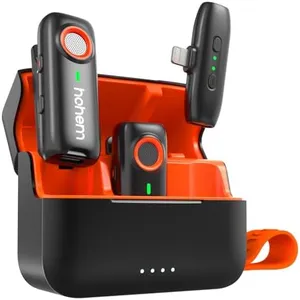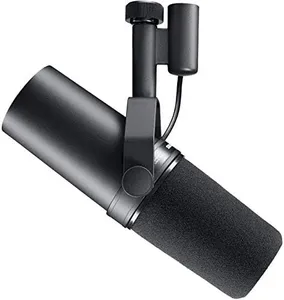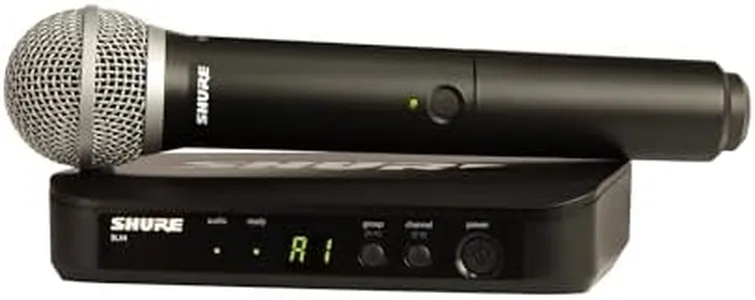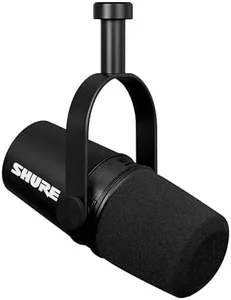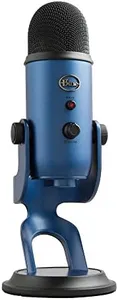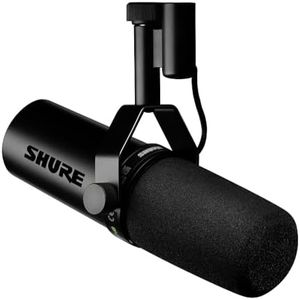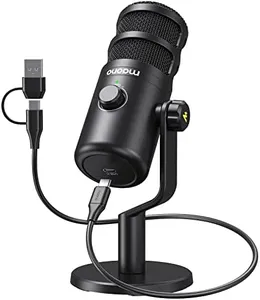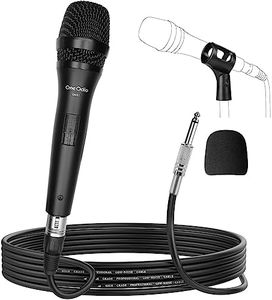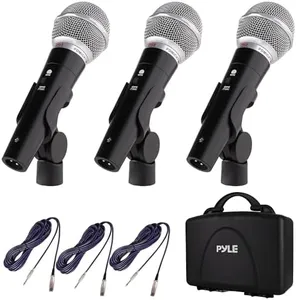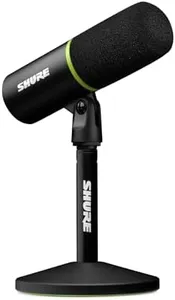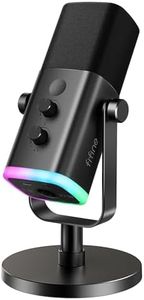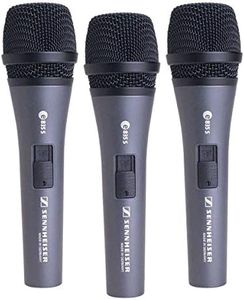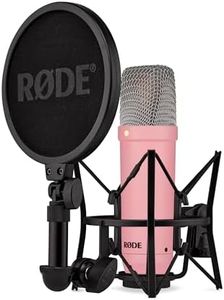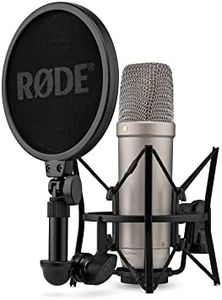10 Best Vocal Microphones 2025 in the United States
Our technology thoroughly searches through the online shopping world, reviewing hundreds of sites. We then process and analyze this information, updating in real-time to bring you the latest top-rated products. This way, you always get the best and most current options available.

Our Top Picks
Winner
Shure SM7B Vocal Dynamic Microphone – XLR Studio Mic for Podcasting, Recording, Broadcasting, Streaming & Gaming – Smooth, Warm Sound, Rugged Build, Detachable Windscreen, Wide Frequency Range, Black
Most important from
12462 reviews
The Shure SM7B is a highly regarded dynamic microphone designed for various applications such as studio recording, podcasting, and live streaming. One of its biggest strengths lies in its versatility; it’s trusted by many professionals across different fields for its ability to deliver clean and natural sound reproduction, making it ideal for both speech and music. The cardioid polar pattern effectively minimizes background noise, focusing on the sound source in front of it, which is a major plus for vocalists and podcasters. The microphone's rugged build quality ensures durability, and it comes with useful accessories like a detachable windscreen and a pop filter, enhancing its usability.
There are considerations to keep in mind. The SM7B requires a good amount of gain to perform optimally, typically needing around 60dB, which might necessitate an additional preamp for users without a high-quality audio interface. This can add to the cost and complexity of setup for those new to audio equipment. Additionally, being an XLR microphone means it isn't plug-and-play; users need to connect it to an audio interface or mixer, which may not be suitable for casual users looking for a straightforward solution.
The Shure SM7B excels in providing high-quality audio for serious vocal applications, but potential users should be aware of its need for proper gain and additional equipment for optimal performance. It’s an excellent choice for those committed to producing professional-level sound but may be less accessible for beginners looking for simplicity.
Most important from
12462 reviews
Shure BLX24/PG58 Wireless Microphone System - 14-Hour Battery Life, 300 ft Range, UHF | Includes PG58 Handheld Vocal Mic, Single Channel Receiver | H9 Band (BLX24/PG58-H9)
The Shure BLX24/PG58 Wireless Microphone System is a robust choice for those seeking a reliable vocal microphone for live performances. Its wireless capabilities allow for a considerable range of up to 300 feet, which is ideal for performers who need to move freely on stage. The system features a unidirectional polar pattern, which is great for picking up vocals while minimizing background noise, making it suitable for singing in various live settings. With the PG58 microphone included, users can expect decent audio quality typical of Shure products, although it might not reach the level of more expensive, high-end models.
One of the notable strengths is its impressive 14-hour battery life, powered by two AA batteries, allowing for extended usage without frequent interruptions. The metal build ensures durability, a hallmark of Shure's trusted quality, making it a good investment for regular performers. The setup is user-friendly, a plus for those who might be less experienced with sound equipment, facilitating quick and hassle-free operation.
Potential users should verify that the H9 frequency band is compatible in their area to avoid connectivity issues. Additionally, the system operates on a single channel, which could be limiting if multiple microphones are needed simultaneously. The sound quality, while superior to many entry-level models, may not satisfy those seeking top-tier audio fidelity for professional studio recording. The Shure BLX24/PG58 is an excellent choice for live performers who prioritize mobility and ease of use, particularly in settings like concerts and karaoke. Its solid build and extensive battery life make it a dependable tool for regular use, although those with more advanced audio needs might look to higher-end options.
Shure MV7X XLR Dynamic Microphone – Voice-Isolating Cardioid Mic for Podcasting, Vocal Recording & Broadcasting, All-Metal, Black
Most important from
3789 reviews
The Shure MV7X is a dynamic microphone designed for podcasting and vocal recording, featuring XLR connectivity, which is ideal for professional setups. One of its primary strengths is the voice isolation technology, which helps to minimize background noise and focus on the speaker's voice, making it suitable for recording in less-than-ideal environments. The unidirectional polar pattern further enhances its ability to capture clear audio by rejecting sounds from the sides and rear.
With an all-metal construction, the MV7X is built to be durable and reliable. It is also compatible with various mic stands, thanks to its 5/8” threaded yoke and included 5/8” to 3/8” adapter, offering flexibility in setup. This microphone is modeled after the renowned Shure SM7B, bringing a trusted heritage and classic design to the table.
However, it is important to note that the MV7X is XLR only, which means it requires an audio interface or a mixer with XLR inputs to function, and does not offer USB connectivity. This might be a limitation for users looking for a plug-and-play solution. Additionally, while the microphone's frequency response and sensitivity are optimized for vocal recording, its signal-to-noise ratio of 72 dB, while decent, is not the highest available, which could be a consideration for extremely noise-sensitive applications. The Shure MV7X offers a great balance of quality and affordability, making it an excellent choice for podcasters and vocalists who need multiple microphones without breaking the bank.
